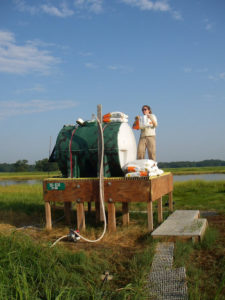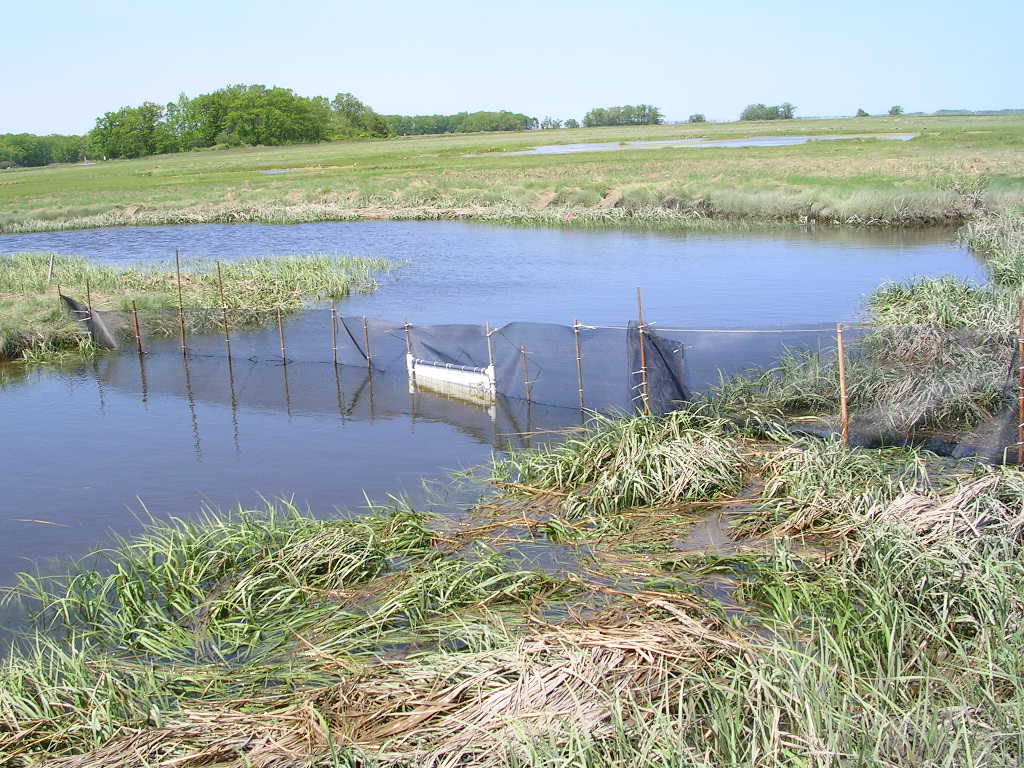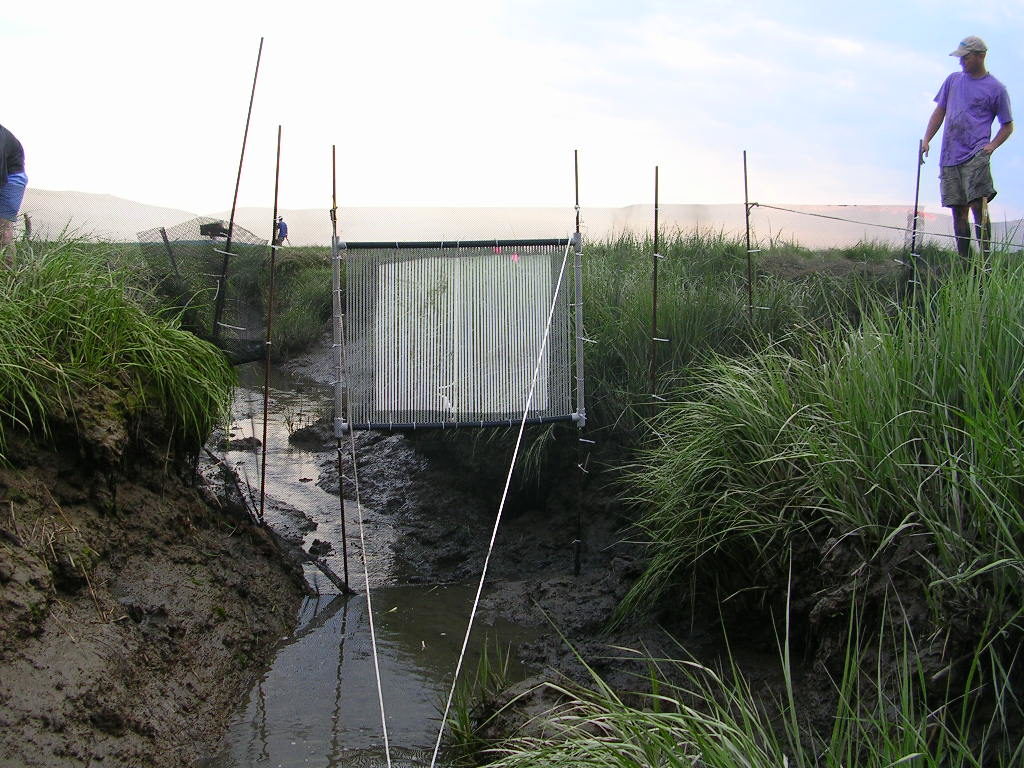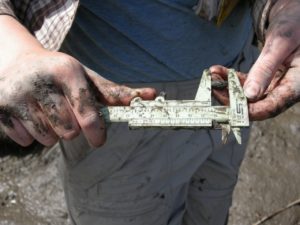Overall Experimental Design
Nutrient Enrichment


In 2004 we began enriching two tidal creeks that branched off the Rowley River. Four tidal creeks have remained as our reference sites. The duration and scale of our experiment has allowed us to address numerous hypotheses including those about nutrient dynamics, geomorphology, and bottom-up control of food-webs. Our nutrient enrichment differs from previous marsh fertilization experiments in a number of ways:
1) Delivery of nutrients: nutrients are added in solution to the twice-daily flooding waters at a constant concentration (70 uM NO3-, 4 uM PO4-; 10-15x background).
2) Spatial scale: because nutrients are added via the flooding waters, we are able to enrich a large area of marsh from the mudflats to the Spartina patens high marsh
3) Longevity: 2012 marks the 9th year of enrichment for a set of tidal creeks and the 4th year for an additional tidal creek.
Altered Food Webs


For some years we reduced the densities of a key predator in this ecosystem, the mummichog, Fundulus heteroclitus. This allowed us to ask questions about trophic structure and energy flow. To achieve fish reduction a ‘block net’ was erected across the creek channel to prevent fish from entering the landward side of the tidal creek.
Specific methods for sampling can be found in our Guide to TIDE.
 |
 |
 |